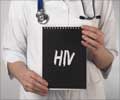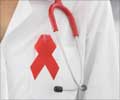- Currie, Edwina. The Observer, 15 February 1987
- HIV - (https://www.who.int/hiv/en/)
- HIV InSite Knowlege Base - (http://hivinsite.ucsf.edu/InSite.jsp?page=KB)
- HIV / AIDS - (https://www.niaid.nih.gov/diseases-conditions/hivaids)
AIDS Distribution Pattern
Worldwide AIDS surveillance is coordinated by GPA at WHO in Geneva. Reports are received from collaborating centers, including CDC in the United States, the WHO Collaborating Centre in Paris, and WHO regional offices and ministries of health. Accuracy and completeness of AIDS reporting vary in different areas of the world.
Epidemiologic studies indicate three broad yet distinct geographic patterns of transmission.
Pattern I is typical of industrialized countries with large numbers of reported AIDS cases, such as North America, Western Europe, Australia, New Zealand, and parts of Latin America. In these areas, most cases occur among homosexual or bisexual males and urban IV drug users. Heterosexual transmission is responsible for only a small percentage of cases but is increasing.
Pattern II is observed in areas of central, eastern, and southern Africa and in some Caribbean countries. In these areas, most cases occur among heterosexuals; the male to female ratio is approximately 1:1 and perinatal transmission is relatively more common than in other areas. IV drug use and homosexual transmission either do not occur or occur at a very low level.
Pattern III is found in areas of Eastern Europe, the Middle East, Asia, and most of the Pacific. HIV appears to have been introduced into these areas in the early to mid-1980s, and only small numbers of cases have been reported. Homosexual and heterosexual transmission has only recently been documented. Generally, cases have occurred among persons who have traveled to endemic areas or who have had sexual contact with individuals from endemic areas, such as homosexual men and female prostitutes.














